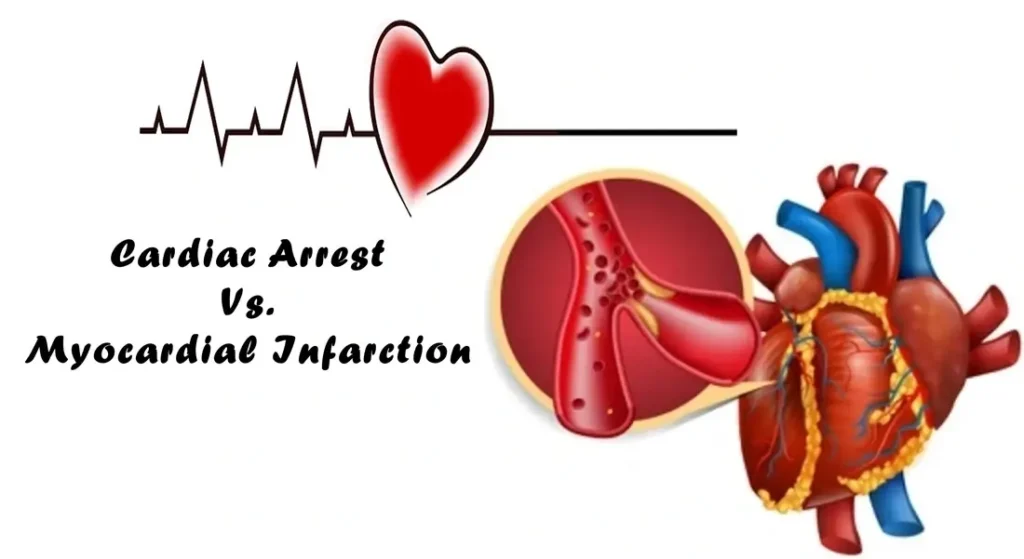
What is the difference between myocardial infarction and cardiac arrest?
Knowing the difference between Myocardial Infarction (heart attack) and Cardiac Arrest (when the heart suddenly stops beating) is important in heart emergencies. Both involve the heart, but they’re different. Both involve the heart, but they have different causes, mechanisms, and implications. The big difference between the two has to do with how they happen and what they do to the heart.
Myocardial Infarction (Heart Attack):
Myocardial infarction, also known as a heart attack, is like a traffic problem in the heart. It happens when a road (or artery) gets blocked by something called a blood clot.
Cause:
Myocardial infarction occurs when there is a blockage in one or more coronary arteries, which supply blood to the heart muscle. The blockage is usually caused by the formation of a blood clot or plaque buildup. It makes it hard for blood to go to a part of the heart, and that part can get hurt.
Mechanism:
The blockage restricts blood flow to a part of the heart muscle, leading to damage or death of that area due to lack of oxygen and nutrients.
Symptoms:
Chest pain or discomfort, shortness of breath, sweating, nausea, and pain radiating to the arm, jaw, or back are common symptoms.
Treatment:
Immediate medical intervention is crucial. Treatments may include medications, angioplasty (to open blocked arteries), and lifestyle changes.
Cardiac Arrest:
Cardiac arrest is like an electrical problem in the heart. Suddenly, the heart stops beating. It can happen for different reasons like problems with the heart’s rhythm.
Cause:
Cardiac arrest is typically caused by an electrical malfunction in the heart that disrupts its normal rhythm. This can result from a heart attack, but it can also be caused by other factors such as arrhythmias, trauma, drug overdose, or certain medical conditions.
Mechanism:
During cardiac arrest, the heart suddenly stops beating, preventing blood from circulating to the rest of the body. This can lead to loss of consciousness and, if not treated promptly, can be fatal.
Symptoms:
Sudden loss of responsiveness, absence of a pulse, and cessation of normal breathing are common signs of cardiac arrest.
Treatment:
Immediate cardiopulmonary resuscitation (CPR) and the use of an automated external defibrillator (AED) are essential for restarting the heart’s normal rhythm. Emergency medical assistance is crucial.
In summary, a myocardial infarction is a result of reduced blood flow to a part of the heart muscle, leading to damage or death of that tissue, whereas cardiac arrest is the sudden and complete cessation of the heart’s pumping function. While a heart attack can contribute to cardiac arrest, they are distinct events with different immediate concerns and treatments. Early recognition and prompt medical intervention are critical for improving outcomes in both cases. When there’s a heart attack, we usually need doctors to help. However, with cardiac arrest, we need to do something right away. That’s where cardiopulmonary resuscitation (CPR) and automated external defibrillators (AEDs) come in to help the heart start beating again.
Pingback: Essential FAQs: Myocardial Infarction and Heart Attack Symptoms Simplified - Body Mysteries